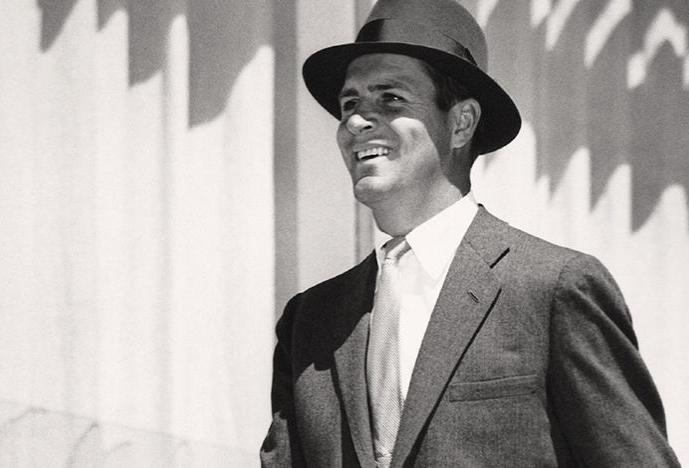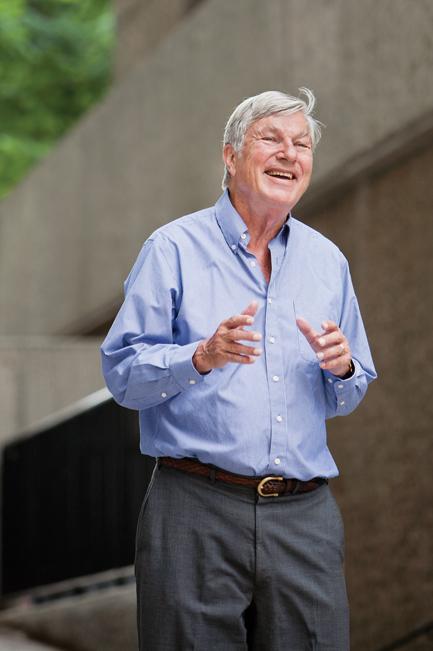The Contagion of Happiness
Harvard researchers are discovering how we can all get happy
- 8 minute read
- Feature

Everyone, it seems—from Buddhist monks to positive psychologists, from Charles Schulz to the Beatles—has offered opinions on what it means to be happy. And whether you believe that bliss is found with a warm puppy, a Prozac prescription, or the pages of self–help books, you likely crave more of it.
For all the bumper–sticker clichés and pop–culture platitudes, though, happiness is one of the less–studied human emotions. It’s not a “treatable” problem like sadness, anger, or fear, and its very essence seems more the stuff of greeting cards than hard science. That’s changing, however, as a growing number of researchers—including several affiliated with Harvard Medical School—are uncovering surprising facts about the nature of delight.
The Sunny Side
One of the greatest challenges in the study of happiness lies in its definition. “Happiness is a big umbrella term that can mean different things to different people,” says Nancy Etcoff, an HMS assistant professor of psychology in Massachusetts General Hospital’s Department of Psychiatry. “We can view happiness in at least three ways—as a hedonic state, as a cognitive state, or as a general life philosophy. Happiness, then, can refer to a way of thinking, such as being optimistic; a way of feeling joy, pleasure, relief, or gratitude; or simply a way of being.”

Others make a clearer distinction between the concept of happiness and the positive emotions the word describes. “Happiness is just drive reduction,” says George Vaillant ’59, an HMS professor of psychiatry at Brigham and Women’s Hospital who has studied the science of positive emotions. “Let’s say you’re speeding down the highway and your stomach is growling. You spot the Golden Arches, pull over, and order a Big Mac. That makes you ‘happy.’” But that satisfaction is fleeting—the resultant heartburn likely lasts longer than your gratification. Happiness, Vaillant believes, is a conscious state of mind, rooted in the neocortex, the region of the brain responsible for thinking, planning, and decision–making: You eat a hamburger and think, “I feel good.”
Joy, on the other hand, is more complex. It’s that warm, fuzzy feeling you get when you hear your child’s laughter, embrace your sweetheart, or cuddle a puppy. “Joy is all about our connection to others,” explains Vaillant. It’s a subconscious, almost visceral feeling that appears to stem from the brain’s limbic system, which is believed to control emotions, including pleasure. Unlike happiness, joy involves little cognitive awareness—you just feel good without thinking about it—but it’s more enduring.
These intricacies have made joy difficult to measure, so scientists tend mainly to tackle what Vaillant calls the “tamer” idea of general happiness in their research. But that, too, has proved tricky. Medicine’s penchant for problem–solving means that most researchers have focused their efforts on studying causes of and treatments for gloomier sentiments like sadness, depression, and anxiety. The smiley–faced cheer of happiness seems less serious—and less potentially profitable—in comparison.
The Pursuit of Happiness
Nevertheless, those who have plumbed the depths of our psyches for more details about how and why we experience positive emotions have uncovered some intriguing facts. Among their findings: Happiness is at least partially genetic. Researchers at the University of Minnesota have found that identical twins appear to share not only the same DNA, but the same general level of happiness, regardless of whether they were raised together or separately. Such studies suggest that nature may play a larger role than nurture in determining our “hedonic setpoint,” or happiness thermostat.

Evolution is also responsible. “Human beings evolved in a dangerous world, where we had to recognize threats to survive,” says Etcoff. “As a result, our brains are wired to be much more sensitive to negative emotions and sensations than positive ones.”
Perhaps it’s this predisposition to pessimism that makes many people wary of looking on the bright side. The exhilarating highs of happiness and joy, after all, increase our vulnerability to the depths of despair—a broken heart, a dashed hope, a shattering disappointment. “Positive emotions,” Vaillant points out, “are often associated with tears.”
Of course, if you’re born with, say, Eeyore’s setpoint, that doesn’t mean you can’t transform yourself into Tigger. While some of us appear biologically prone to shyness, depression, or anxiety, for example, we aren’t predestined to a life of negativity. How we find happiness, it seems, may depend on where we look for it—and that isn’t necessarily under the plastic surgeon’s knife or in a million–dollar mansion. Although a much–publicized 2011 report from the University of Texas at Austin found that the people ranked most attractive were about 10 percent happier than their less–attractive peers, other research suggests that our own beauty—or lack thereof—has little to do with a sunny disposition. In Etcoff’s research for her book Survival of the Prettiest, she found that while attractive people tend to enjoy more advantages than plainer people, they don’t necessarily experience greater life satisfaction.
Money doesn’t always buy happiness, either. A boost in income does appear to trigger an elevation in mood, but only to a certain point—$75,000 a year to be exact, according to one recent study. People with lower incomes—particularly those at or below the poverty line—have more stress, but once financial worries ease, positive emotions plateau. If Bill Gates and Oprah Winfrey are happier than the rest of us, it isn’t because of their bank accounts. In the end, a sense of gratitude for what we have may be what heartens us: Classic studies that compared the emotional well–being of lottery winners, paraplegics, and quadriplegics found all three groups had similar levels of current happiness, suggesting that once the initial windfall or trauma fades, we adapt to change and return to our original hedonic setpoint.
Glee Club
So what does bring us happiness? Research shows that our relationships with others, rather than what we see in the mirror or find in our wallets, may be what matter most. It’s a concept that held true for our cave–dwelling ancestors, who formed elaborate social structures to increase their odds of survival. These days, our connections are more about building a family, gossiping at the water cooler, and adding to our list of Facebook friends than outsmarting saber–toothed tigers. But results of the long–running Grant Study of Adult Development, which Vaillant helps oversee, suggest that the emotional benefits of connectedness remain. Vaillant and his colleagues have found, for instance, that only the capacity for loving relationships predicted life satisfaction in older men.
In turn, being happy can have its own advantages. More than three decades ago, Grant Study data showed that good mental health in men slowed the deterioration of their physical health, even after adjusting for genetics, obesity, and tobacco and alcohol use. Although Vaillant has since found that after age 50 vascular risk factors such as smoking, elevated diastolic blood pressure, diabetes, obesity, and alcohol abuse appear to play a far greater role than mental health in subsequent health and longevity, other research still supports a link to mental health. Research by Ichiro Kawachi, an HMS associate professor of medicine at Brigham and Women’s Hospital, found a strong correlation between happiness and good health, both in individuals and within communities.
And there’s more good news: Happiness may be limitless. Just as someone’s bad mood can rub off on you, positivity, too, may spread, says Nicholas Christakis ’88, an HMS professor of medical sociology and of medicine who has researched the contagion of emotions within the larger context of social networks. His findings have shown that happiness may be a collective phenomenon: Having a happy friend who lives within a mile of you, for example, appears to increase the probability that you will be happy as well. In collaboration with James Fowler at the University of California at San Diego, Christakis found similar effects for the spread of happiness between next–door neighbors, siblings that live nearby, and spouses—so that good feelings continue to move from person to person, even when there’s no longer a direct connection to the original Pollyanna.
“Just as some diseases are contagious,” Christakis says, “we’ve found that many emotions can pulse through social networks.” And unlike the flu, happiness is a gift you can actually enjoy.
Perhaps, as Christakis’s research suggests, that’s the real key to a rosy outlook.
“Happiness isn’t just one big event,” Etcoff says, “but the accrual of smaller, incremental steps, such as feeling gratitude and helping others.”
Christakis agrees. “Rather than asking how we can get happier, we should be asking how we can increase happiness all around us,” he says. “When you make positive changes in your own life, those effects ripple out from you and you can find yourself surrounded by the very thing you fostered.”
Jessica Cerretani, a former assistant editor of Harvard Medicine, is now a freelance writer in Dorchester, Massachusetts.
Images: Hulton Archive/Getty Images (top); Al Carlay (N. Etcoff); John Soares (G.Vaillant)